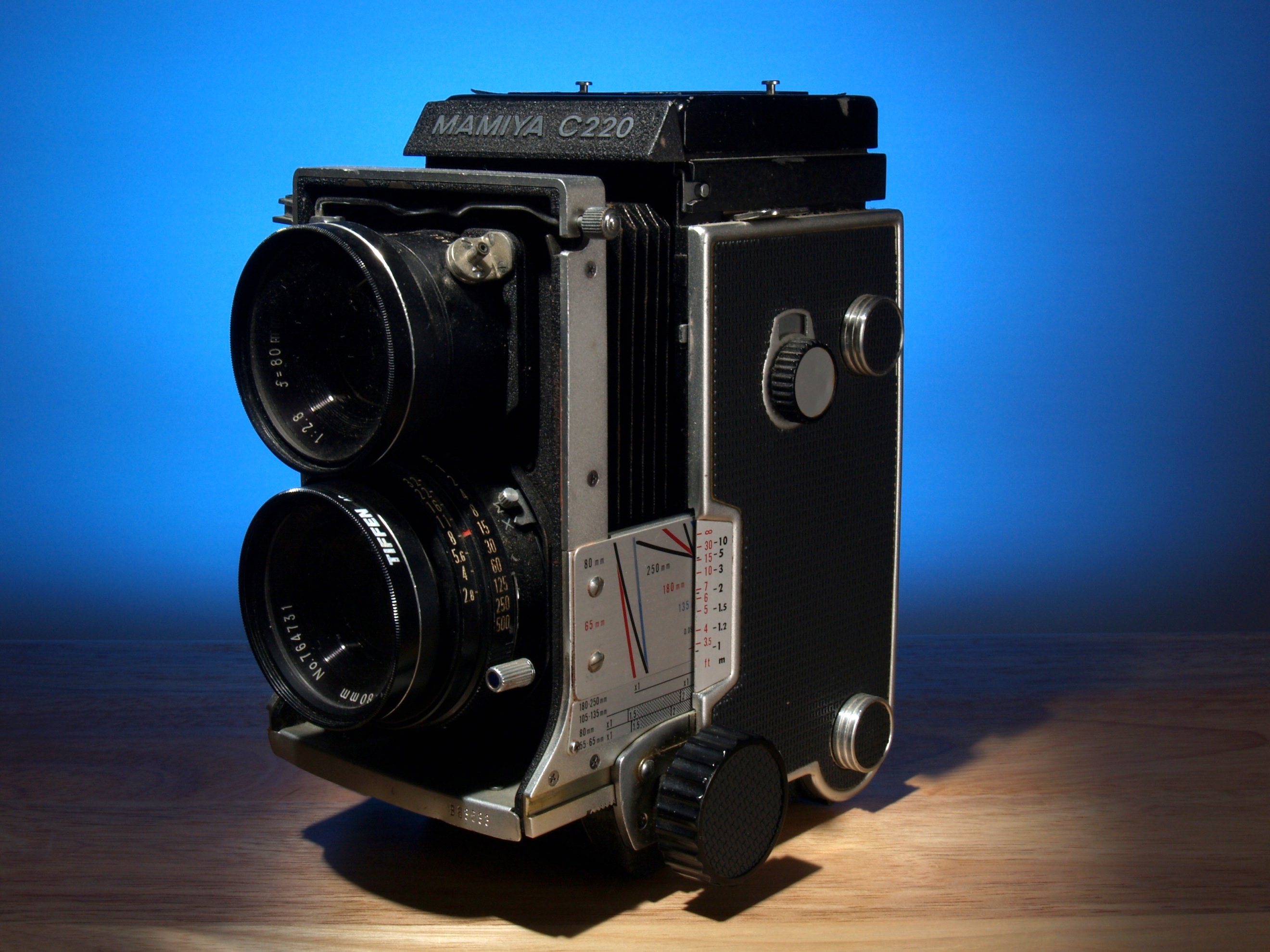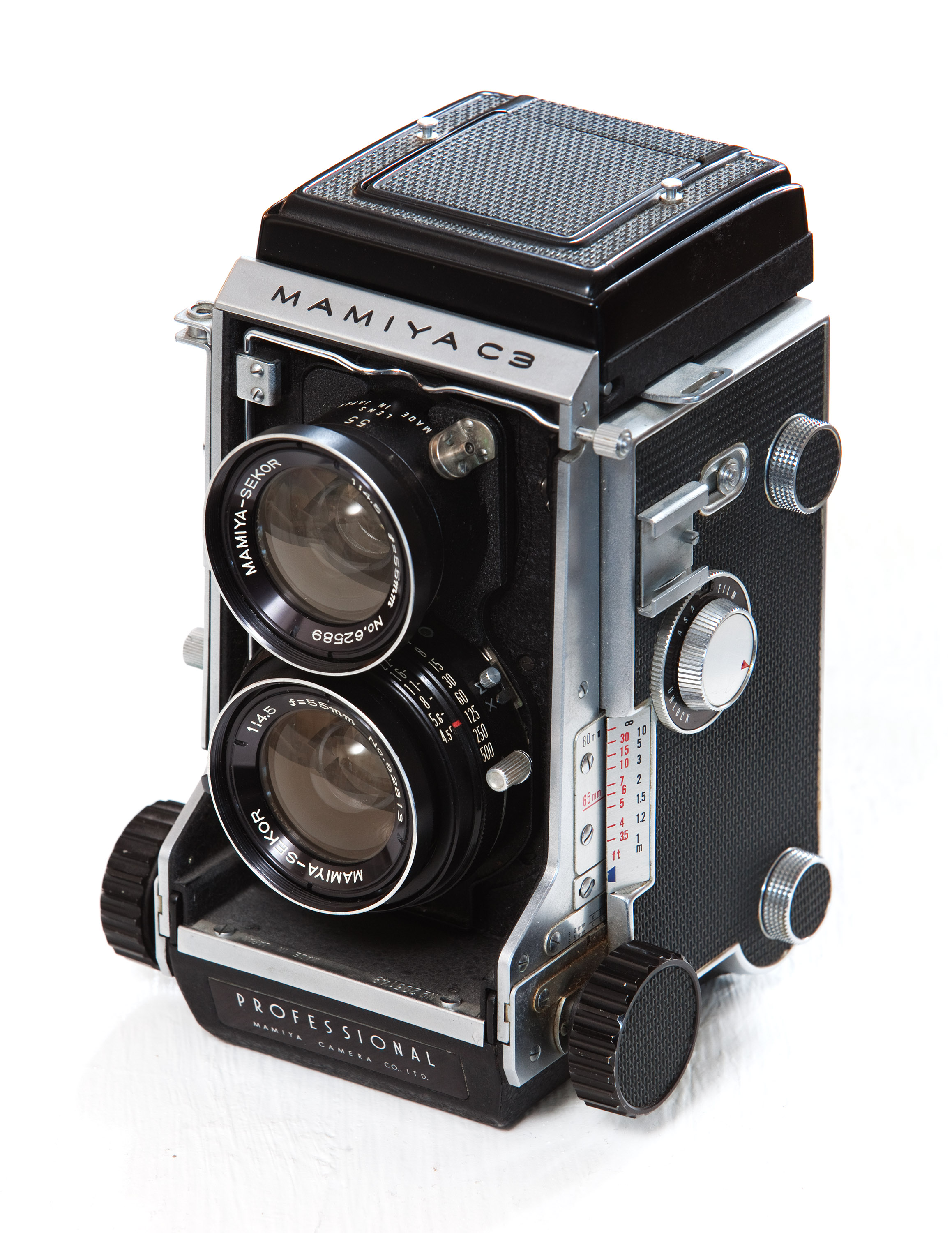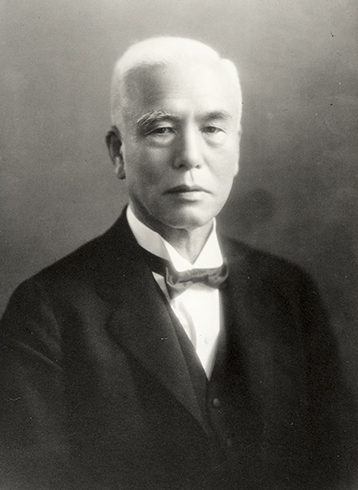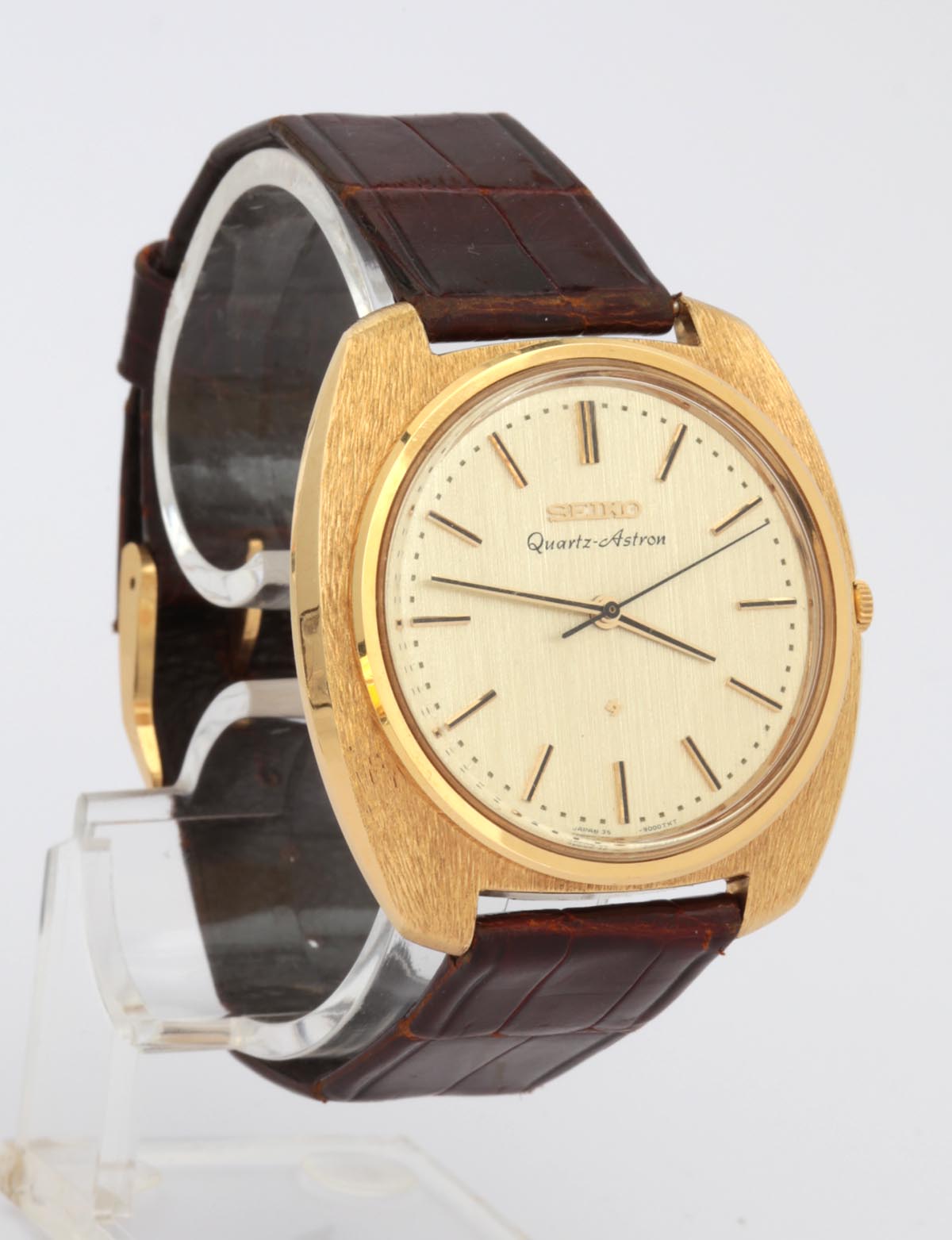|
Mamiya C
The Mamiya C series is a line of twin-lens reflex medium-format system cameras manufactured by Mamiya between 1956 and 1994. It was developed from the Mamiyaflex series of cameras built from 1949 to 1956. The Mamiya C series was initially aimed at the professional market. Common features Unlike most TLR cameras, the Mamiya C has interchangeable lenses. The upper and lower lenses come off as a unit, and are available in at least seven different focal lengths. The lower lens of each unit has an aperture diaphragm as well as a leaf shutter. A flash sync terminal is part of the lens unit, and the delay can be set to M or X mode. The camera has an interlocking baffle that enables lenses to be changed without exposing the film. Focusing is performed via a bellows system on the front side of the camera. Early models had separate film advance and shutter cocking mechanisms; on later models the shutter was automatically cocked as the film was advanced. There is no metering in the ... [...More Info...] [...Related Items...] OR: [Wikipedia] [Google] [Baidu] |
Mamiya
is a Japanese company that manufactures high-end cameras and other related photographic and optical equipment. With headquarters in Tokyo, it has two manufacturing plants and a workforce of over 200 people. The company was founded in May 1940 by camera designer Seiichi Mamiya () and financial backer Tsunejiro Sugawara. History Mamiya originally achieved fame for its professional medium-format rangefinder film cameras such as the Mamiya Six (1940) and the Mamiya Press (1962) series. It later developed medium-format industry workhorse single lens reflex cameras: RB67 (1970), RZ67 (1982), and 645 (1975); and twin-lens reflex C series, all of which were used by advanced amateur and professional photographers. Many Mamiya models over the past six decades have become collectors' items. The earliest Mamiya Six medium-format folding camera, the 35 mm Mamiya-Sekor 1000DTL, the lightweight 35 mm Mamiya NC1000, the 6×6 cm medium-format C series of interchangeab ... [...More Info...] [...Related Items...] OR: [Wikipedia] [Google] [Baidu] |
Mamiya C330
The Mamiya C330 Professional is a traditional film twin-lens reflex camera introduced in the 1970s for the professional and advanced amateur photography markets. This model was 340 grams lighter than the previous model C33, which weighed 2040 grams (with 80 mm lens). The later C330f is an improvement on the C330 and was succeeded by the C330S with further improvements. * Uses 120 and 220 rollfilms * With the rack and pinion bellows type focusing system, close-up photography is possible without attachments. * Has a self-cocking one action 360° winding crank with a double exposure prevention device. Double exposure is also possible. The straight filmroll path has no right-angle turn and guarantees an absolutely flat film. * The backplate is changeable for single-exposure photography * Dimensions: 122 (w) × 168 (h) × 114 (d) * Weight: 1.7 kg (with standard lens) The Mamiya C-series cameras are one of the very few twin-lens reflex cameras with ''interchangeable lenses ... [...More Info...] [...Related Items...] OR: [Wikipedia] [Google] [Baidu] |
List Of Mamiya Products
This is a list of products made by Mamiya, including cameras and lenses. Models made by Mamiya but marketed under other labels are shown in parentheses. Cameras 16 mm format * Mamiya 16 (1949) * Mamiya Super 16 (1953) * Mamiya Super 16 II (1957) * Mamiya Super 16 III (Tower 16) (1958) * Mamiya 16 Automatic (Revue 16 Automatic) (1959) * Mamiya 16 Deluxe (1961) * Mamiya 16 EE Deluxe (1962) 126 format * (Argus (camera company), Argus 260 Automatic) (1964) * (Keystone Camera Company, Keystone K1020) (1966) — fixed-lens single lens reflex 35 mm format Rangefinder * Mamiya 35 I (1949) * Mamiya 35 II (1955) * Mamiya 35 III (1957) * Mamiya Magazine 35 (1957) * Mamiya Wide (1957) * Mamiya Elca (1958) * Mamiya Crown (1958) * Mamiya Metra (1958) * Mamiya S (1958) * Mamiya Wide E (1959) * Mamiya Auto Metra (1959) * Mamiya Metra 2 (1959) * Mamiya Auto Metra 2 (1959) * Mamiya Sketch (1959) — square image format (24mm × 24mm) * Mamiya S2 (1959) * Mamiya Ruby (1959) * Mamiya Auto Delu ... [...More Info...] [...Related Items...] OR: [Wikipedia] [Google] [Baidu] |
Depth Of Field
The depth of field (DOF) is the distance between the nearest and the farthest objects that are in acceptably sharp focus (optics), focus in an image captured with a camera. See also the closely related depth of focus. Factors affecting depth of field For cameras that can only focus on one object distance at a time, depth of field is the distance between the nearest and the farthest objects that are in acceptably sharp focus in the image. "Acceptably sharp focus" is defined using a property called the "circle of confusion". The depth of field can be determined by focal length, distance to subject (object to be imaged), the acceptable circle of confusion size, and aperture. Limitations of depth of field can sometimes be overcome with various techniques and equipment. The approximate depth of field can be given by: \text \approx \frac for a given maximum acceptable circle of confusion , focal length , f-number , and distance to subject . As distance or the size of the acc ... [...More Info...] [...Related Items...] OR: [Wikipedia] [Google] [Baidu] |
Angle Of View
In photography, angle of view (AOV) describes the angular extent of a given scene that is imaged by a camera. It is used interchangeably with the more general term '' field of view''. It is important to distinguish the angle of view from the angle of coverage, which describes the angle range that a lens can image on a given image sensor or film location (the image plane). In other words, the angle of coverage is determined by the lens and the image plane while the angle of view (AOV) is decided by not only them but also the film or image sensor size. The image circle (giving the angle of coverage) produced by a lens on a given image plane is typically large enough to completely cover a film or sensor at the plane, possibly including some vignetting toward the edge. If the angle of coverage of the lens does not fill the sensor, the image circle will be visible, typically with strong vignetting toward the edge, and the effective angle of view will be limited to the angle of cov ... [...More Info...] [...Related Items...] OR: [Wikipedia] [Google] [Baidu] |
Aperture
In optics, the aperture of an optical system (including a system consisting of a single lens) is the hole or opening that primarily limits light propagated through the system. More specifically, the entrance pupil as the front side image of the aperture and focal length of an optical system determine the cone angle of a bundle of rays that comes to a focus in the image plane. An optical system typically has many structures that limit ray bundles (ray bundles are also known as ''pencils'' of light). These structures may be the edge of a lens or mirror, or a ring or other fixture that holds an optical element in place or may be a special element such as a diaphragm placed in the optical path to limit the light admitted by the system. In general, these structures are called stops, and the aperture stop is the stop that primarily determines the cone of rays that an optical system accepts (see entrance pupil). As a result, it also determines the ray cone angle and brightne ... [...More Info...] [...Related Items...] OR: [Wikipedia] [Google] [Baidu] |
Focal Length
The focal length of an Optics, optical system is a measure of how strongly the system converges or diverges light; it is the Multiplicative inverse, inverse of the system's optical power. A positive focal length indicates that a system Convergence (optics), converges light, while a negative focal length indicates that the system Divergence (optics), diverges light. A system with a shorter focal length bends the Ray (optics), rays more sharply, bringing them to a focus in a shorter distance or diverging them more quickly. For the special case of a thin lens in air, a positive focal length is the distance over which initially Collimated beam, collimated (parallel) rays are brought to a Focus (optics), focus, or alternatively a negative focal length indicates how far in front of the lens a point source must be located to form a collimated beam. For more general optical systems, the focal length has no intuitive meaning; it is simply the inverse of the system's optical power. In mos ... [...More Info...] [...Related Items...] OR: [Wikipedia] [Google] [Baidu] |
Nidec Copal Corporation
The , or Copal, is a Japanese manufacturer of optical, electronic and mechanical equipment, primarily for the photographic industry. It has been a subsidiary of Nidec Corporation since 1998, and was formerly known as the Copal Corporation. The company began operation in 1946, with small-scale production of photographic shutters; these are still one of the company's best-known products. In the 1960s the company began producing the well-known Copal Square vertically travelling metal blade focal plane shutter, which was very successful and was used in cameras by many prominent manufacturers. The ''Copal Square-S'', for example used in the Konica T3s (1973-1978) and the Nikkormat FT, is very reliable. It works over a wide temperature range. The electronically controlled Copal ''Square E'' (1968) was used in the Yashica TL Electro X, the Canon EF, the Nikkormat EL. For Minolta XE and the Leica R3 The Leica R3 was a 35mm SLR camera by Leica and the first model of their R s ... [...More Info...] [...Related Items...] OR: [Wikipedia] [Google] [Baidu] |
Seiko
, commonly known as Seiko ( , ), is a Japanese maker of watches, clocks, electronic devices, and semiconductors. Founded in 1881 by Kintarō Hattori in Tokyo, Seiko introduced the world's first commercial quartz wristwatch in 1969. Seiko is widely known for its wristwatches. Seiko and Rolex are the only two watch companies considered to be vertically integrated. Seiko is able to design and develop all the components of a watch, as well as assemble, adjust, inspect and ship them in-house. Seiko's mechanical watches consist of approximately 200 parts, and the company has the technology and production facilities to design and manufacture all of these parts in-house. The company was incorporated (K. Hattori & Co., Ltd.) in 1917 and renamed Hattori Seiko Co., Ltd. in 1983 and Seiko Corporation in 1990. After reconstructing and creating its operating subsidiaries (such as Seiko Watch Corporation and Seiko Clock Inc.), it became a holding company in 2001 and was renamed Seiko Hol ... [...More Info...] [...Related Items...] OR: [Wikipedia] [Google] [Baidu] |
Seikosha
was a branch of the Japanese company Seiko that produced clocks, watches, shutters, computer printers and other devices. It was the root of the manufacturing companies of the Seiko Group. History *1881 — Kintarō Hattori opens the watch and jewelry shop " K. Hattori" (''Hattori Tokeiten'' in Japanese; currently named Seiko Holdings Corporation) in the Ginza area of Tokyo, Japan Japan is an island country in East Asia. Located in the Pacific Ocean off the northeast coast of the Asia, Asian mainland, it is bordered on the west by the Sea of Japan and extends from the Sea of Okhotsk in the north to the East China Sea .... *1892 — is established in Tokyo as the clock manufacturing arm of K. Hattori. *1917 — K. Hattori becomes a company (K. Hattori & Co., Ltd.). *1937 — The watch production division of Seikosha is split off as . *1942 — Daiwa Kogyo, Ltd. is founded in Suwa, Nagano by Hisao Yamazaki. *1943 — Daini Seikosha establishes ... [...More Info...] [...Related Items...] OR: [Wikipedia] [Google] [Baidu] |
Mamiya C220
The Mamiya C220 is a twin-lens reflex camera made in the early 1970s by the Japanese camera manufacturer Mamiya. The camera has interchangeable lenses ranging from 55 mm wide-angle to 250 mm telephoto and accepts 120 and 220 rollfilms. The rack and pinion focusing system with a bellows makes it possible for close-up photography without attachments. The straight film path has no sharp turns for absolute flatness of the film. Variations of the Mamiya TLR line from the Mamiyaflex to the C330S Professional continued the evolution of the TLR camera with the final TLR, the c330S Pro. Changeable lenses on medium format SLR and rangefinder cameras such as the Hasselblad line or Koni-Omega Press were the norm. The Mamiya twin lens reflex cameras are among the very few medium-format TLR cameras with interchangeable lenses. * Dimensions: 118 mm (w) x 167 mm (h) x 113 mm (d) * Weight: 1.44 kg Lenses There are seven Mamiya Sekor lenses: ; 2 wide-angle le ... [...More Info...] [...Related Items...] OR: [Wikipedia] [Google] [Baidu] |
Twin-lens Reflex
A twin-lens reflex camera (TLR) is a type of camera with two objective lenses of the same focal length. One of the lenses is the photographic objective or "taking lens" (the lens that takes the picture), while the other is used for the viewfinder system, which is usually viewed from above at waist level. In addition to the objective, the viewfinder consists of a 45-degree mirror (the reason for the word ''reflex'' in the name), a matte focusing screen at the top of the camera, and a pop-up hood surrounding it. The two objectives are connected, so that the focus shown on the focusing screen will be exactly the same as on the film. However, many inexpensive "pseudo" TLRs are fixed-focus models to save on the mechanical complexity. Most TLRs use leaf shutters with shutter speeds up to 1/500 of a second with a bulb setting. For practical purposes, all TLRs are film cameras, most often using 120 film, although there are many examples which used 620 film, 127 film, and 35 mm fil ... [...More Info...] [...Related Items...] OR: [Wikipedia] [Google] [Baidu] |








